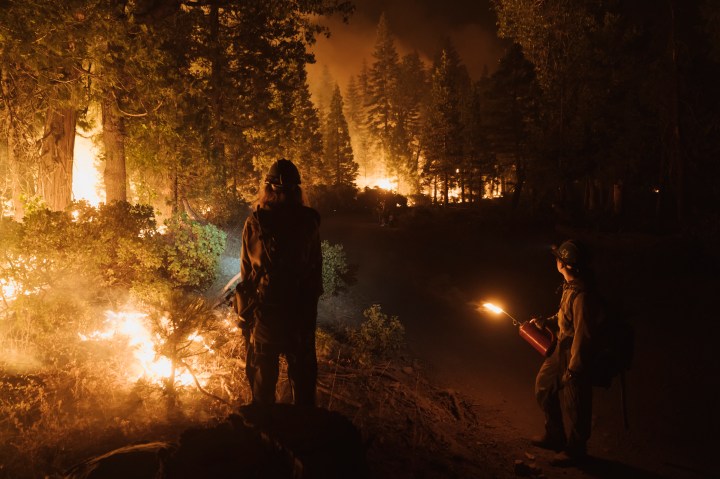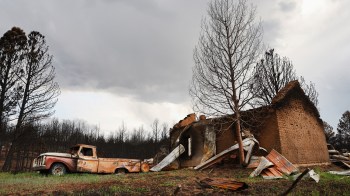
Prescribed burns need insurance. It’s increasingly hard to get
Prescribed burns need insurance. It’s increasingly hard to get

We know home fire insurance policies have gotten more expensive and harder to obtain — especially in areas of the Western United States that are prone to wildfires.
But there are other groups that need liability insurance for fires. Companies and nonprofits conduct prescribed burns, which are set and carefully managed to burn excess fuels on the landscape. Those groups are finding fewer and fewer insurance options.
Last spring, embers from a prescribed burn escaped into a northern New Mexico forest. They ended up sparking one of the largest wildfires in the state’s recorded history, scorching a huge swath of land and destroying hundreds of homes and structures.
However, according to Daniel Godwin, a Fire Management Planning Specialist with the U.S. Forest Service, it’s rare for a controlled burn to get out of control.
“The majority of prescribed fires are very safe,” he said. “They’re, in some ways, boring.”
Not boring enough, though. He said fewer than 1% of prescribed burns escape, and even fewer cause any real damage. But when they do, they really scare people — including, Godwin said, insurance executives.
“Insurance for prescribed fire and smoke liability has either gone through the roof or just been entirely dropped,” he said.
This insurance issue mostly affects private wildland firefighting companies and conservation nonprofits that carry out prescribed burns. Unlike the Forest Service, which is a federal agency, these private groups need liability insurance if they can’t get covered.
“It can just really upend the balance sheet, and these organizations can blip out,” Godwin said.
And they are blipping out, said Jim Karels, Fire Director for the National Association of State Forestry Departments.
“I’m starting to see moreso,” Karels said. “Even in the last couple weeks, land management consultant companies that are saying, we’re backing out of the prescribed fire business. We can’t find the insurance. We can’t afford the insurance.”
Karels said prescribed fire is one of the best methods out there for preventing future wildfires, and that 80% of prescribed burns are done by private groups. But there are reasons insurance companies are choosing not to insure. For one, there just isn’t a lot of money to make in the fire prevention sector.
“Insurance is based on the law of large numbers,” said John Muha with Alliant Insurance Services, where he helps a few conservation groups get liability coverage for controlled burns. But he said most companies don’t offer it.
“There isn’t enough premium to glean from the number of entities engaged in prescribed burns, to offset the large loss in the event of the one prescribed burn, that would become uncontrollable,” Muha said.
If this kind of preventive controlled burning doesn’t happen, however, that could mean more catastrophic, uncontrolled and expensive wildfires across the West.
There’s a lot happening in the world. Through it all, Marketplace is here for you.
You rely on Marketplace to break down the world’s events and tell you how it affects you in a fact-based, approachable way. We rely on your financial support to keep making that possible.
Your donation today powers the independent journalism that you rely on. For just $5/month, you can help sustain Marketplace so we can keep reporting on the things that matter to you.

















